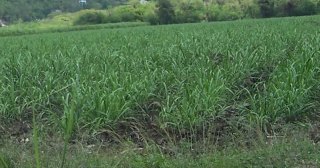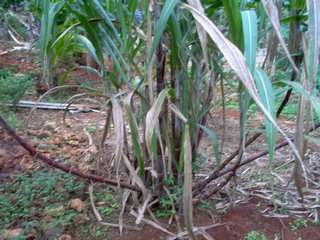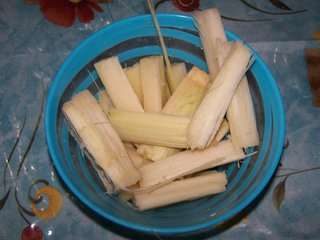
Young Cane in the Field
Sugar cane is a bamboo-like plant that is the source of sugar, rum, and molasses. During the 18th, 19th, and 20th centuries, it was the main crop produced on numerous plantations throughout the Caribbean. Almost every island was covered with sugar plantations dedicated to refining cane for its sweet properties, with African slaves providing the primary source of labor. These plantations supplied 80-90 percent of the sugar consumed in Western Europe.
In the 1800s, sugar cane cultivation dominated islands like Martinique, Grenada, Saint Croix, Jamaica, Barbados, the Leeward Islands, Saint Domingue, Cuba, and others under French or British rule. On British islands, sugar was the sole crop grown, while on French islands, it was the most important crop. Sugar cane thrived best on coastal lands where the soil was naturally yellow and fertile.
Sugar cane was introduced to the British West Indies in the mid-1600s by Dutch-Jews exiled from Brazil. They encouraged local farmers in Barbados and other islands to switch from cotton and tobacco to sugar cane, leading to an economic boom due to the depressed prices of cotton and tobacco. The British quickly adopted sugar for cakes and as a sweetener in teas, driving up demand.

Young Cane in the Field

Mature Cane
For about 100 years, Barbados was the richest of all the European colonies in the Caribbean region. This prosperity remained unmatched until larger countries like Haiti and Jamaica increased their sugar cane production. The sugar production process also led to the creation of related commodities such as rum and molasses.
The sugar cane industry not only shaped the economy but also had a significant impact on the culture and history of the Caribbean islands
.
Mature or Ripe Sugar Cane

Cane Strip of Peel

Cane at the Market